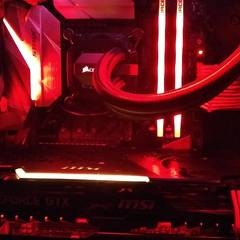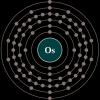-
Posts
5,121 -
Joined
-
Last visited
Reputation Activity
-

-
.png) Pugs501 got a reaction from i_build_nanosuits in Does Overclocking A GPU Void The Warranty
Pugs501 got a reaction from i_build_nanosuits in Does Overclocking A GPU Void The Warranty
YES IT WILL!
You are taking a Product and modifying the way it functions in a possibly destructive manner, then YES OCing anything will void your Warranty
-
.png) Pugs501 got a reaction from i_build_nanosuits in Does Overclocking A GPU Void The Warranty
Pugs501 got a reaction from i_build_nanosuits in Does Overclocking A GPU Void The Warranty
I have EVGA
But for the MOST TIME IT WILL VOID THE WARRENTY!
-

-
.png) Pugs501 got a reaction from Cepheus_001 in You know you're a techie when. . .
Pugs501 got a reaction from Cepheus_001 in You know you're a techie when. . .
When I was able to by pass my schools Firewall without the use of a proxy.
-
.png) Pugs501 got a reaction from kelvinhall05 in You know you're a techie when. . .
Pugs501 got a reaction from kelvinhall05 in You know you're a techie when. . .
When I was able to by pass my schools Firewall without the use of a proxy.
-

-
.png) Pugs501 got a reaction from DocSwag in Experiences with non-techies
Pugs501 got a reaction from DocSwag in Experiences with non-techies
One of my Friends Brother was bragging he got a "Gaming" Mouse
It's Bluetooth 2.0
-
.png)
-

-

-

-

-
 Pugs501 reacted to Glenwing in Haswell Xeon iGpu?
Pugs501 reacted to Glenwing in Haswell Xeon iGpu?
The E3 Xeons ending in "5" have integrated graphics. For example, the E3-1225 V3.
Ones ending in "0" do not. All E5 Xeons do not.
-
 Pugs501 got a reaction from Khraft in Nvidia Unveils Pascal Gpu: 16gb Of Memory, 1tb/s Bandwidth
Pugs501 got a reaction from Khraft in Nvidia Unveils Pascal Gpu: 16gb Of Memory, 1tb/s Bandwidth
At the Japanese edition of NVIDIA GTC (GPU Technology Conference), NVIDIA finally revealed details behind its 2016 graphics architecture, codenamed Pascal. The architecture was launched at the main GTC event, which took place in San Jose on March 17th, 2015 (watch Jen-Hsun Huang’s GTC keynote here). GTC Japan was hosted by Marc Hamilton.
As always, the Pascal GPU will be manufactured in Taiwan Semiconductor Manufacturing Company (TSMC), using the brand new 16nm FinFET process. This process is much more than a simple number, since it marks the shift from planar, 2D transistors to the FinFET i.e. 3D transistors. This shift required that the engineers make lot of changes in the thought process, and should result in significant power savings.
NVIDIA Pascal proof-of-concept Engineering Board with 4GB HBM memory. Retail products will carry 16GB of HBM2 memory.
But that is just the beginning, as Pascal will bring support for up to 32GB of HBM2 memory. However, the actual products based on Pascal will launch with 16GB HBM2 memory, and more memory will depend solely on memory vendors such as SK.Hynix and Samsung. What is changing the most is bandwidth. Both the Kepler-based Tesla (K40) and Maxwell-based M4/M40 featured 12GB of GDDR5 and achieved up to 288GB/s of memory bandwidth. Those 16GB HBM SDRAM (packed in four 4GB HBM2 chips) will bring 1TB/s in bandwidth, while internally the GPU surpasses the 2TB/s barrier.
Pascal will also be available in multi-GPU packaging, replacing the Tesla K80 (NVIDIA skipped Maxwell-gen dual-GPU Tesla). Combined figures are very interesting to compare – 24GB GDDR5 and 480GB/s bandwidth should be replaced with 32GB HBM2 and 2TB/s bandwidth, mutually connected through NVLink rather than PCIe. The NVLink will enable up to 80GB/s, which should replace PLX PCIe Gen3 bridge chips that can only support 16GB/s (8GB/s per GPU). This part should be ‘warm up’ for 2018 and the Volta architecture.
Pascal GPU architecture highlights: Higher performance through 16nm process and GPU Boost, stacked 2.5D / 3D memory, NVLink and mixed-mode calculation.
Unfortunately, the company did not disclose how much would ECC (Error Correcting Code) reduce the memory performance and overhead, but that is something all HBM-powered products will have to deal with. In any case, the company is gearing for a battle with Intel Xeon Phi, which in its recent incarnation is becoming quite the competitor. Still, Pascal is expected to deliver double-digit single-precision TFLOPS performance, and a lot of focus will be placed on so-called mixed-mode precision (INT8, FP16 and FP32). Pascal is expected to hit the market during the first half of 2016. Article: http://vrworld.com/2015/11/16/nvidia-unveils-pascal-gpu-16gb-of-memory-1tbs-bandwidth/ Author: http://vrworld.com/author/theo_valich/ -
 Pugs501 got a reaction from farhanorakzai in Nvidia Unveils Pascal Gpu: 16gb Of Memory, 1tb/s Bandwidth
Pugs501 got a reaction from farhanorakzai in Nvidia Unveils Pascal Gpu: 16gb Of Memory, 1tb/s Bandwidth
At the Japanese edition of NVIDIA GTC (GPU Technology Conference), NVIDIA finally revealed details behind its 2016 graphics architecture, codenamed Pascal. The architecture was launched at the main GTC event, which took place in San Jose on March 17th, 2015 (watch Jen-Hsun Huang’s GTC keynote here). GTC Japan was hosted by Marc Hamilton.
As always, the Pascal GPU will be manufactured in Taiwan Semiconductor Manufacturing Company (TSMC), using the brand new 16nm FinFET process. This process is much more than a simple number, since it marks the shift from planar, 2D transistors to the FinFET i.e. 3D transistors. This shift required that the engineers make lot of changes in the thought process, and should result in significant power savings.
NVIDIA Pascal proof-of-concept Engineering Board with 4GB HBM memory. Retail products will carry 16GB of HBM2 memory.
But that is just the beginning, as Pascal will bring support for up to 32GB of HBM2 memory. However, the actual products based on Pascal will launch with 16GB HBM2 memory, and more memory will depend solely on memory vendors such as SK.Hynix and Samsung. What is changing the most is bandwidth. Both the Kepler-based Tesla (K40) and Maxwell-based M4/M40 featured 12GB of GDDR5 and achieved up to 288GB/s of memory bandwidth. Those 16GB HBM SDRAM (packed in four 4GB HBM2 chips) will bring 1TB/s in bandwidth, while internally the GPU surpasses the 2TB/s barrier.
Pascal will also be available in multi-GPU packaging, replacing the Tesla K80 (NVIDIA skipped Maxwell-gen dual-GPU Tesla). Combined figures are very interesting to compare – 24GB GDDR5 and 480GB/s bandwidth should be replaced with 32GB HBM2 and 2TB/s bandwidth, mutually connected through NVLink rather than PCIe. The NVLink will enable up to 80GB/s, which should replace PLX PCIe Gen3 bridge chips that can only support 16GB/s (8GB/s per GPU). This part should be ‘warm up’ for 2018 and the Volta architecture.
Pascal GPU architecture highlights: Higher performance through 16nm process and GPU Boost, stacked 2.5D / 3D memory, NVLink and mixed-mode calculation.
Unfortunately, the company did not disclose how much would ECC (Error Correcting Code) reduce the memory performance and overhead, but that is something all HBM-powered products will have to deal with. In any case, the company is gearing for a battle with Intel Xeon Phi, which in its recent incarnation is becoming quite the competitor. Still, Pascal is expected to deliver double-digit single-precision TFLOPS performance, and a lot of focus will be placed on so-called mixed-mode precision (INT8, FP16 and FP32). Pascal is expected to hit the market during the first half of 2016. Article: http://vrworld.com/2015/11/16/nvidia-unveils-pascal-gpu-16gb-of-memory-1tbs-bandwidth/ Author: http://vrworld.com/author/theo_valich/ -
 Pugs501 got a reaction from Tech_Dreamer in Nvidia Unveils Pascal Gpu: 16gb Of Memory, 1tb/s Bandwidth
Pugs501 got a reaction from Tech_Dreamer in Nvidia Unveils Pascal Gpu: 16gb Of Memory, 1tb/s Bandwidth
At the Japanese edition of NVIDIA GTC (GPU Technology Conference), NVIDIA finally revealed details behind its 2016 graphics architecture, codenamed Pascal. The architecture was launched at the main GTC event, which took place in San Jose on March 17th, 2015 (watch Jen-Hsun Huang’s GTC keynote here). GTC Japan was hosted by Marc Hamilton.
As always, the Pascal GPU will be manufactured in Taiwan Semiconductor Manufacturing Company (TSMC), using the brand new 16nm FinFET process. This process is much more than a simple number, since it marks the shift from planar, 2D transistors to the FinFET i.e. 3D transistors. This shift required that the engineers make lot of changes in the thought process, and should result in significant power savings.
NVIDIA Pascal proof-of-concept Engineering Board with 4GB HBM memory. Retail products will carry 16GB of HBM2 memory.
But that is just the beginning, as Pascal will bring support for up to 32GB of HBM2 memory. However, the actual products based on Pascal will launch with 16GB HBM2 memory, and more memory will depend solely on memory vendors such as SK.Hynix and Samsung. What is changing the most is bandwidth. Both the Kepler-based Tesla (K40) and Maxwell-based M4/M40 featured 12GB of GDDR5 and achieved up to 288GB/s of memory bandwidth. Those 16GB HBM SDRAM (packed in four 4GB HBM2 chips) will bring 1TB/s in bandwidth, while internally the GPU surpasses the 2TB/s barrier.
Pascal will also be available in multi-GPU packaging, replacing the Tesla K80 (NVIDIA skipped Maxwell-gen dual-GPU Tesla). Combined figures are very interesting to compare – 24GB GDDR5 and 480GB/s bandwidth should be replaced with 32GB HBM2 and 2TB/s bandwidth, mutually connected through NVLink rather than PCIe. The NVLink will enable up to 80GB/s, which should replace PLX PCIe Gen3 bridge chips that can only support 16GB/s (8GB/s per GPU). This part should be ‘warm up’ for 2018 and the Volta architecture.
Pascal GPU architecture highlights: Higher performance through 16nm process and GPU Boost, stacked 2.5D / 3D memory, NVLink and mixed-mode calculation.
Unfortunately, the company did not disclose how much would ECC (Error Correcting Code) reduce the memory performance and overhead, but that is something all HBM-powered products will have to deal with. In any case, the company is gearing for a battle with Intel Xeon Phi, which in its recent incarnation is becoming quite the competitor. Still, Pascal is expected to deliver double-digit single-precision TFLOPS performance, and a lot of focus will be placed on so-called mixed-mode precision (INT8, FP16 and FP32). Pascal is expected to hit the market during the first half of 2016. Article: http://vrworld.com/2015/11/16/nvidia-unveils-pascal-gpu-16gb-of-memory-1tbs-bandwidth/ Author: http://vrworld.com/author/theo_valich/ -
 Pugs501 got a reaction from CatCloud in Nvidia Unveils Pascal Gpu: 16gb Of Memory, 1tb/s Bandwidth
Pugs501 got a reaction from CatCloud in Nvidia Unveils Pascal Gpu: 16gb Of Memory, 1tb/s Bandwidth
Imagine using 3 of these in the future :3
-
 Pugs501 got a reaction from Sithhy in Nvidia Unveils Pascal Gpu: 16gb Of Memory, 1tb/s Bandwidth
Pugs501 got a reaction from Sithhy in Nvidia Unveils Pascal Gpu: 16gb Of Memory, 1tb/s Bandwidth
At the Japanese edition of NVIDIA GTC (GPU Technology Conference), NVIDIA finally revealed details behind its 2016 graphics architecture, codenamed Pascal. The architecture was launched at the main GTC event, which took place in San Jose on March 17th, 2015 (watch Jen-Hsun Huang’s GTC keynote here). GTC Japan was hosted by Marc Hamilton.
As always, the Pascal GPU will be manufactured in Taiwan Semiconductor Manufacturing Company (TSMC), using the brand new 16nm FinFET process. This process is much more than a simple number, since it marks the shift from planar, 2D transistors to the FinFET i.e. 3D transistors. This shift required that the engineers make lot of changes in the thought process, and should result in significant power savings.
NVIDIA Pascal proof-of-concept Engineering Board with 4GB HBM memory. Retail products will carry 16GB of HBM2 memory.
But that is just the beginning, as Pascal will bring support for up to 32GB of HBM2 memory. However, the actual products based on Pascal will launch with 16GB HBM2 memory, and more memory will depend solely on memory vendors such as SK.Hynix and Samsung. What is changing the most is bandwidth. Both the Kepler-based Tesla (K40) and Maxwell-based M4/M40 featured 12GB of GDDR5 and achieved up to 288GB/s of memory bandwidth. Those 16GB HBM SDRAM (packed in four 4GB HBM2 chips) will bring 1TB/s in bandwidth, while internally the GPU surpasses the 2TB/s barrier.
Pascal will also be available in multi-GPU packaging, replacing the Tesla K80 (NVIDIA skipped Maxwell-gen dual-GPU Tesla). Combined figures are very interesting to compare – 24GB GDDR5 and 480GB/s bandwidth should be replaced with 32GB HBM2 and 2TB/s bandwidth, mutually connected through NVLink rather than PCIe. The NVLink will enable up to 80GB/s, which should replace PLX PCIe Gen3 bridge chips that can only support 16GB/s (8GB/s per GPU). This part should be ‘warm up’ for 2018 and the Volta architecture.
Pascal GPU architecture highlights: Higher performance through 16nm process and GPU Boost, stacked 2.5D / 3D memory, NVLink and mixed-mode calculation.
Unfortunately, the company did not disclose how much would ECC (Error Correcting Code) reduce the memory performance and overhead, but that is something all HBM-powered products will have to deal with. In any case, the company is gearing for a battle with Intel Xeon Phi, which in its recent incarnation is becoming quite the competitor. Still, Pascal is expected to deliver double-digit single-precision TFLOPS performance, and a lot of focus will be placed on so-called mixed-mode precision (INT8, FP16 and FP32). Pascal is expected to hit the market during the first half of 2016. Article: http://vrworld.com/2015/11/16/nvidia-unveils-pascal-gpu-16gb-of-memory-1tbs-bandwidth/ Author: http://vrworld.com/author/theo_valich/ -

 Pugs501 got a reaction from Guest in Nvidia Unveils Pascal Gpu: 16gb Of Memory, 1tb/s Bandwidth
Pugs501 got a reaction from Guest in Nvidia Unveils Pascal Gpu: 16gb Of Memory, 1tb/s Bandwidth
At the Japanese edition of NVIDIA GTC (GPU Technology Conference), NVIDIA finally revealed details behind its 2016 graphics architecture, codenamed Pascal. The architecture was launched at the main GTC event, which took place in San Jose on March 17th, 2015 (watch Jen-Hsun Huang’s GTC keynote here). GTC Japan was hosted by Marc Hamilton.
As always, the Pascal GPU will be manufactured in Taiwan Semiconductor Manufacturing Company (TSMC), using the brand new 16nm FinFET process. This process is much more than a simple number, since it marks the shift from planar, 2D transistors to the FinFET i.e. 3D transistors. This shift required that the engineers make lot of changes in the thought process, and should result in significant power savings.
NVIDIA Pascal proof-of-concept Engineering Board with 4GB HBM memory. Retail products will carry 16GB of HBM2 memory.
But that is just the beginning, as Pascal will bring support for up to 32GB of HBM2 memory. However, the actual products based on Pascal will launch with 16GB HBM2 memory, and more memory will depend solely on memory vendors such as SK.Hynix and Samsung. What is changing the most is bandwidth. Both the Kepler-based Tesla (K40) and Maxwell-based M4/M40 featured 12GB of GDDR5 and achieved up to 288GB/s of memory bandwidth. Those 16GB HBM SDRAM (packed in four 4GB HBM2 chips) will bring 1TB/s in bandwidth, while internally the GPU surpasses the 2TB/s barrier.
Pascal will also be available in multi-GPU packaging, replacing the Tesla K80 (NVIDIA skipped Maxwell-gen dual-GPU Tesla). Combined figures are very interesting to compare – 24GB GDDR5 and 480GB/s bandwidth should be replaced with 32GB HBM2 and 2TB/s bandwidth, mutually connected through NVLink rather than PCIe. The NVLink will enable up to 80GB/s, which should replace PLX PCIe Gen3 bridge chips that can only support 16GB/s (8GB/s per GPU). This part should be ‘warm up’ for 2018 and the Volta architecture.
Pascal GPU architecture highlights: Higher performance through 16nm process and GPU Boost, stacked 2.5D / 3D memory, NVLink and mixed-mode calculation.
Unfortunately, the company did not disclose how much would ECC (Error Correcting Code) reduce the memory performance and overhead, but that is something all HBM-powered products will have to deal with. In any case, the company is gearing for a battle with Intel Xeon Phi, which in its recent incarnation is becoming quite the competitor. Still, Pascal is expected to deliver double-digit single-precision TFLOPS performance, and a lot of focus will be placed on so-called mixed-mode precision (INT8, FP16 and FP32). Pascal is expected to hit the market during the first half of 2016. Article: http://vrworld.com/2015/11/16/nvidia-unveils-pascal-gpu-16gb-of-memory-1tbs-bandwidth/ Author: http://vrworld.com/author/theo_valich/ -
 Pugs501 got a reaction from aneil1998 in Is my hard drive dying?
Pugs501 got a reaction from aneil1998 in Is my hard drive dying?
Step One
BACK IT UP!
Step Two
Defrag It
Step Three
Hope for the best
-
 Pugs501 got a reaction from SPAS-ID in Is my hard drive dying?
Pugs501 got a reaction from SPAS-ID in Is my hard drive dying?
Step One
BACK IT UP!
Step Two
Defrag It
Step Three
Hope for the best
-
 Pugs501 got a reaction from ThinkWithPortals in Power Supplies - Aerocool?
Pugs501 got a reaction from ThinkWithPortals in Power Supplies - Aerocool?
I would trust EVGA
Also NEVER SKIMP on your Power Supply
-
 Pugs501 got a reaction from TheRandomness in Painting a Asus RAMPAGE V EXTREME Motherboard with Plasti-Dip
Pugs501 got a reaction from TheRandomness in Painting a Asus RAMPAGE V EXTREME Motherboard with Plasti-Dip
IT's a VERY, VERY Dumb Idea.
-
 Pugs501 got a reaction from mikat in Painting a Asus RAMPAGE V EXTREME Motherboard with Plasti-Dip
Pugs501 got a reaction from mikat in Painting a Asus RAMPAGE V EXTREME Motherboard with Plasti-Dip
IT's a VERY, VERY Dumb Idea.






















.thumb.gif.5f14f8fd8bb14aea47162a102d949bd5.gif)
